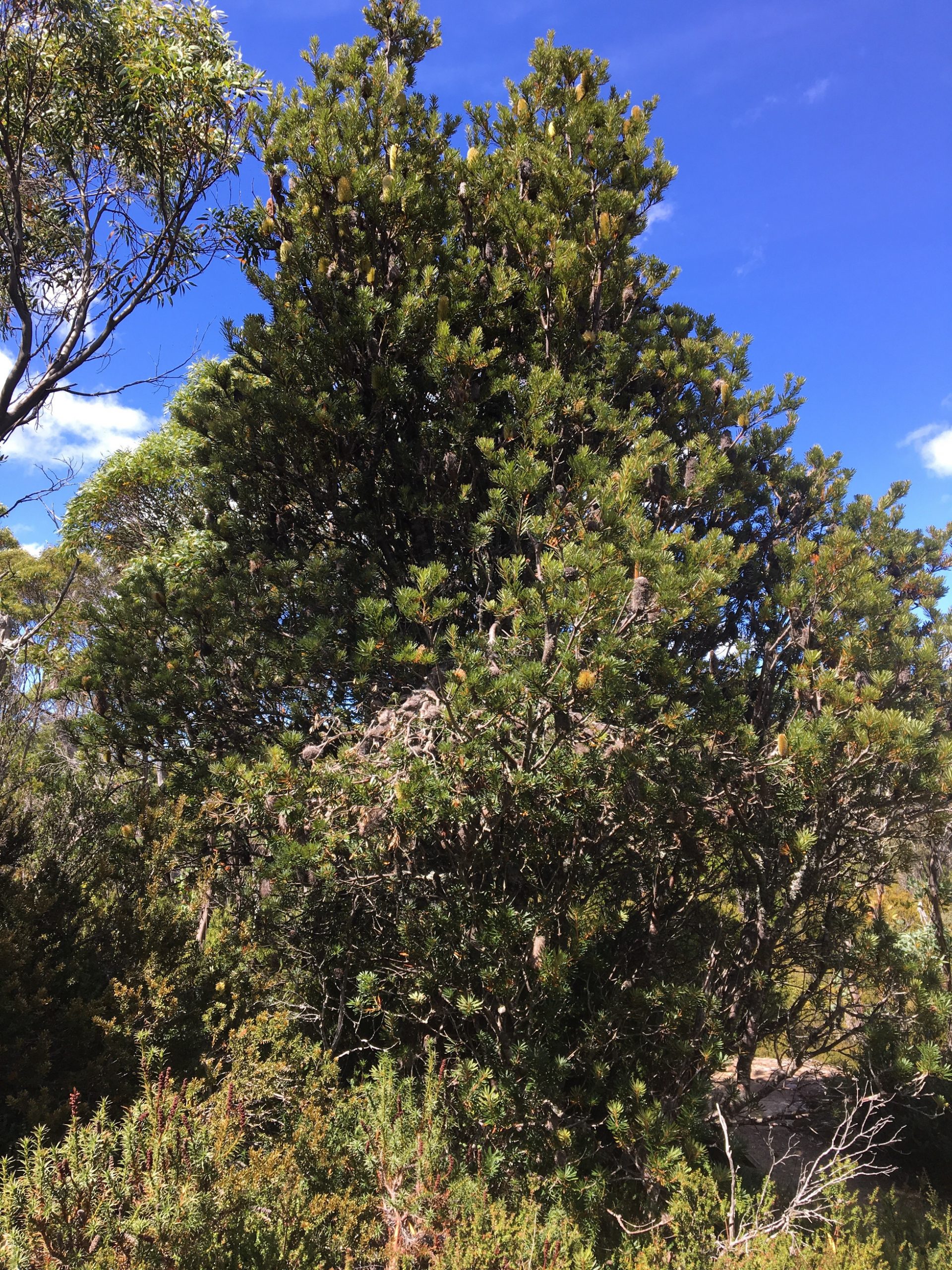Arve Falls Lookout
by Amanda Double

Feeling stifled from long days of mask-wearing? Luckily, in Tasmania we are never far from somewhere beautiful to escape to on our days off – and breathe in lungfuls of restorative fresh air, mask-free.
One of my favourite daytrips from Hobart is to the Hartz Mountains National Park, 84 km southwest of the city. It only takes about 1.5 hours to get there (if you’re not tempted to stop off in Huonville, Franklin or Geeveston on the way), but it feels like entering a different world. First set aside as a Scenic Reserve in 1939, from 1989 it was declared part of the Tasmanian Wilderness World Heritage Area. The landscape has been carved out by ice over millions of years, and the park is renowned for its rugged mountains, beautiful lakes and alpine moorlands.
From Geeveston, turn right onto Arve Road (C632), following it for around 13 km until reaching the signposted turnoff to the park (the final section of the road is unsealed). A valid Parks Pass is required for entry to all of Tasmania’s national parks.
Fit and experienced walkers can tackle Hartz Peak in from three to five hours return, or Hartz Pass in 3.5 hours. A walk to Lake Esperance takes 1.5 to 2 hours return, and it’s only about 45 minutes return to Lake Osborne. But there are also a couple of delightful much shorter scenic walks in this park, eminently suitable for family excursions.

One of these is to Arve Falls Lookout – an easy, 20 minute return walk through beautiful sub-alpine vegetation. Drive past the Waratah Picnic Shelter for about 1.5 km until you reach a small carpark on the left. The easy-to-follow track starts from here.
Helpful interpretive signs along the path set the scene and help with plant identification: “… the track follows the boundary between a snow gum woodland and alpine herbfield before entering the world of the Arve River and its cascades.”
On my most recent trip we easily spot the pineapple grass (Astelia alpina) and the Alpine coral-fern (Gleichenia alpina). Silver banksia trees (Banksia marginata) also abound – many of them huge. According to another sign: “You can estimate the age of a banksia. Each year two new branches fork out from the end of last year’s growth. By tracing the number of forks back to the ground, it is possible to count the number of years the plant has lived …” We manage to resist this time, keen to follow the creek and see the falls. The sound of water flowing is balm to our ears.

Stairs take us to the viewing platform. From the top Arve Falls seem not very tall, but they showcase a big drop over the edge of the plateau, overlooking the valley below. The alpine stream drops 500 metres before emerging as a shallow river at the Arve River picnic area. We feel lucky that there’s not too many other people about today, so we can spend as long as we like in this beautiful, peaceful spot.
It doesn’t take long to return to the carpark. Before heading home, you can add a quick stroll to Waratah Lookout (only five minutes return), to a viewing platform with expansive forest views, across the Huon Valley to the Wellington Range.
It’s such a replenishing feeling, immersing oneself in nature. As American naturalist Henry David Thoreau has reflected: “We need the tonic of wildness … We can never have enough of Nature.”

